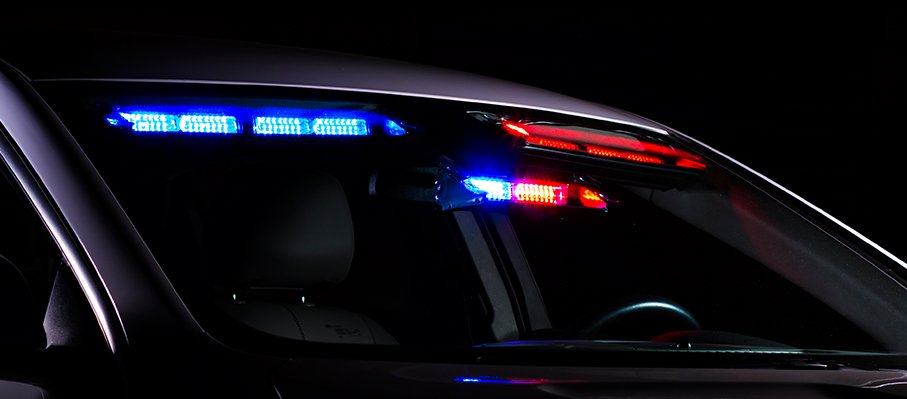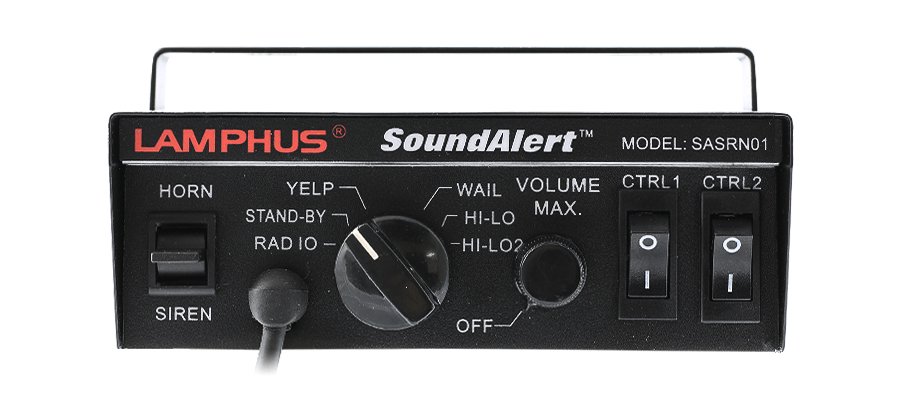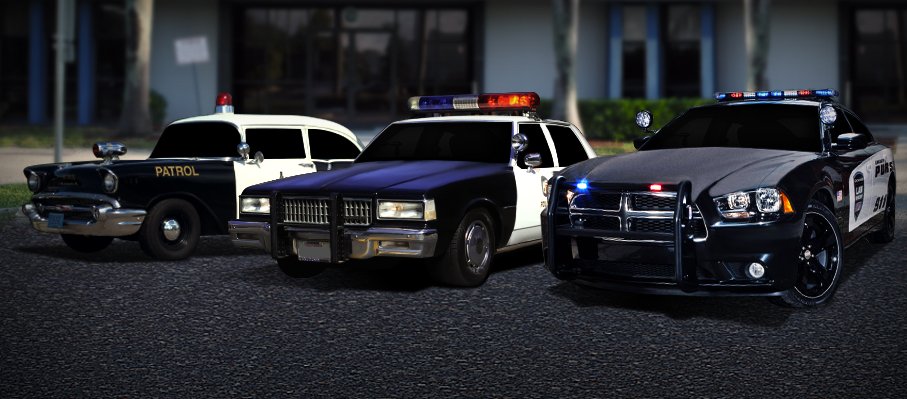Flashing blue lights and the piercing whine of a siren: These are the hallmarks of today’s police vehicles. Even small children can easily identify the presence of patrol cars, but have you ever stopped to think how today’s sirens and police lights came into being? It’s an interesting tale that adds to the mystique of our law enforcement officers and can help you get a sense of a piece of the rich history and evolution of police car lights and sirens.
The Evolution of Police Car Lights
During the decades just before and after World War II, police departments used just one single beacon to alert drivers and pedestrians that a police car needed the right of way. Rotating lamps or mirrors were used to create light in multiple directions. Beacons were low-cost and very effective in the more laid back environment of mid-20th century America.
As time passed, however, departments recognized that they wanted more efficient and visible lighting systems. As a result, many adopted a magnetic-mount lighting solution that was both bright and portable, enabling it to be transferred from vehicle to vehicle.
In the early 1990s, the predecessors of today’s light bars were introduced. Initial models featured a simple light bar mounted on the car’s roof onto which two or more beacons could be attached. Today’s LED technology allows for a long-lasting, energy-efficient and bright solution that lets departments choose a number of different color combinations.
Modern models also contain a number of components such as spotlights, halogen lights and LED bulbs. In addition, light bars can be fitted with alternating or wig-wag lights that flash in left-right-left or other patterns. Grille lights can be fitted into or behind the car’s grille and create a forward-facing flashing effect that can be seen in the rear view mirrors of traffic in front of the police vehicle.
Dash lights, which are also forward-facing, are mounted on the dash to increase visibility. They are most commonly found on covert vehicles. Deck lights, which are rear-facing equivalents of dash lights, are located on the vehicle’s parcel shelf and are used in both covert and marked cars.
The Location and Function of Today’s Police Car Lights
Modern police vehicles can be equipped with a wide array of lighting solutions. It is up to the department, the municipality and even the state to determine what is legal and what types of lighting solutions are permissible. In general, however, roof-mounted light bars can give warnings, provide floodlights to illuminate even the darkest of crime scenes and light up alleys and other dark environments. Available colors include white, amber, blue, green, red, white and combinations of the above.
In addition to roof-mounted options, police cars can be outfitted with lights for their grilles and decks. Finally, visor lights are available that allow undercover officers the ability to hide or display their lights depending on the situation. An added advantage is that these visor LED solutions can be easily transferred from one vehicle to another, making them a cost-effective solution for many financially strapped police departments.

More About Colors
Speaking of colors, have you ever wondered why most police departments use red and blue as their hues of choice? Although opinions vary, the consensus is that red lights can be lost among other vehicle tail lights when traffic is heavy.
Colorblindness also has a lot to do with it as those who can see red easily can’t see blue, and vice versa. In addition, both blue and red can be seen easily at night and in foggy conditions.

Some Facts About Police Sirens
In ancient Greek lore, sirens were mythological creatures who lured sailors with their enchanting voices and music, causing the seafarers to wreck their ships on the rocks. The piercing alert devices that bear this venerable name had their humble beginnings in Scotland during the 1790s when they were invented by John Robinson as a type of musical instrument. Very simple in their construction, they contained only a pneumatic tube with two disks. One of the disks rotated while the other remained still. The loud sound made by the siren was the result of air passing through the tube. The mechanical sirens of yesterday were heavy and difficult to install. Therefore, they have now been replaced with more effective and efficient electronic models.
The first of these appeared in the 1960s and used amplifiers, modulators and oscillators to make a much louder sound that was then transmitted to a speaker that was mounted on the roof of the vehicle. Today’s electronic sirens also allow for the creation of distinctive sound patterns. These help the public to tell the difference between various types of first responders such as police, fire and paramedics.
There is nothing like the tell-tale flash of red and blue roof-mounted LED strobe lights and the scream of a siren to immediately attract everyone’s attention. To the criminal, these cues spell the likelihood of impending arrest. To bystanders and drivers, they are a visible and audible command to get out of the way. For victims, they are a reassuring clue that help and justice are on the way. Keep these interesting facts about the history and evolution of police car lights and sirens in mind the next time you are alerted to the presence of law enforcement via their lights and sirens.



Post Comments
You must be logged in to post a comment.
click here to login